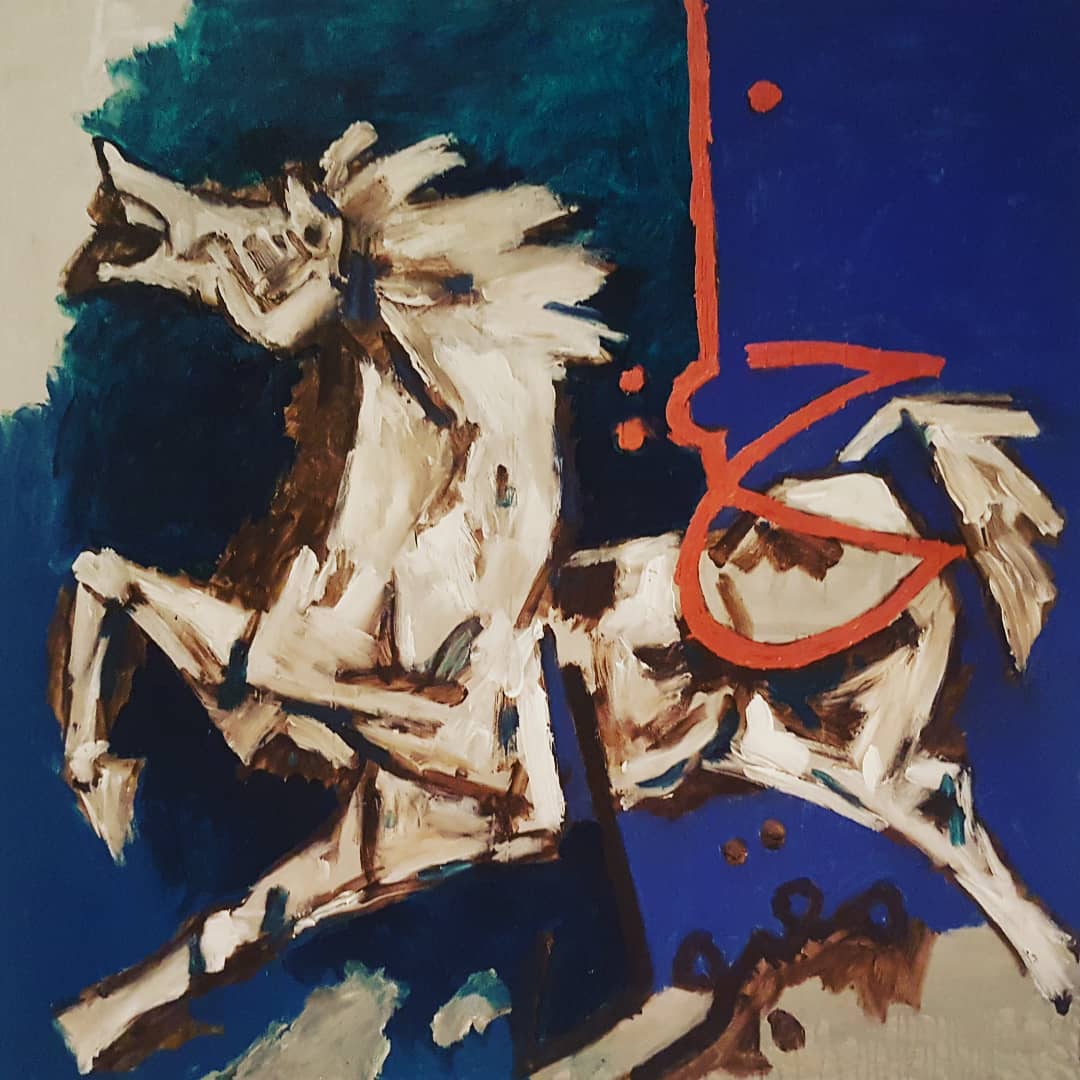
And the tragedy of Karbala, like many stories in our swathe of the world, is primarily transmitted through the oral tradition but manifests itself via a bevy of iconography which lends itself readily to the canvas. So how could contemporary artists in the subcontinent resist the temptation?
One of the most enduring images to have emerged in the European artistic tradition is that of Mary cradling the bruised body of Jesus Christ in her arms. Komail Aijazuddin, in his work titled Pieta from 2014 transposes that image onto the events of Karbala to offer a metaphorical representation of the grief which accompanies the remembrance of the tragedy which befell Imam Hussain (RA) and his caravan of men, women, and children.
The overpowering use of black and red makes it seem as if the scene itself is slipping past the confines of the frame and bleeding onto the floor. Similarly, Aijazuddin’s The Ascension of the Imam depicts not only the aftermath of the Battle of Karbala but also places in the fore and middle ground a host of individuals who will now have to grapple with and uphold the memory of those events; almost showering future generations in the enduring light of Imam Hussain’s (RA) sacrifice.
 PHOTO: EXPRESS
PHOTO: EXPRESSBut, lest we forget, it was the women in the caravan of Imam Hussain (RA) who ensured that their story lives on to become an epic of sacrifice and valor. Led by the indomitable Bibi Zainab (SA), whose defiance in the face of oppression rung out like a stentorian roar in Yazid’s court, the women of Karbala narrated the events of their ordeal and passed it onto their listeners. It is these very women and the countless others who derive inspiration from them, that Nahid Raza tributed in her collection of paintings from 1996-97.
Raza has always had the enviable quality of being able to reinvent herself as an artist, and these paintings are a testament to that. They depict the Muharram procession and focus on the women who continue to protect history by reenacting the same story year after year. For Raza, that unbreakable thread between the old and the new, the passing of a story from one generation to the next is what prompted her to make those 11 paintings, because, as she puts it, “I simply felt all that in my heart.”
MF Husain had a similar compulsion. Firmly rooted in a childhood fascination, Husain said that his love for painting horses grew out of watching the huge statues of horses being made for Muharram during his childhood. Husain’s now-iconic depictions of those cavorting, balletic horses stem from the fact that he was “constantly going back into the past...for inspiration, for symbols.”
The fact that the vistas on display during Muharram burrowed themselves into Husain’s mind is not surprising since these acts of reverence rely greatly on pageantry and theatricality. Tragedy naturally lends itself to the spectacle, and there are few sights more arresting during the Muharram procession than that of a white horse being marched through a river of black - something which seems to have caught Muhammad Zeeshan’s eye.
The artist’s latest collection, currently on display at the Commune Artist Colony, see Zeeshan return to dark graphite on industrial sandpaper; a technique that helps emblazon the enduring images from Muharram. Particularly striking are his depictions of the various reinterpretations of the Zuljanah, Imam Husain’s (RA) trusty steed, with its finery, battle armour, and bruised body almost leaping off the surface due to the stark colour contrast.
Moreso, Zeeshan’s collection serves to “reinterpret the traditional azakhana,” allowing him to morph the various symbols of Muharram into artistic metaphors - a trait which he shares with Askari Mian Irani.
In 1989, Askari Mian Irani, whose artistic sensibilities are usually hard to pin down, showcased an exhibition which drew heavily from the tale of Karbala, with his painting Naqsh-e-Fath, showing a cavalcade of horsemen on the charge. “He uses squares of the Naqsh format to paint in different square symbols of the Battle of Karbala, such as the Tomb of Hazrat Ali (RA), or an impression of a blood-stained palm, or a line of charging horsemen.
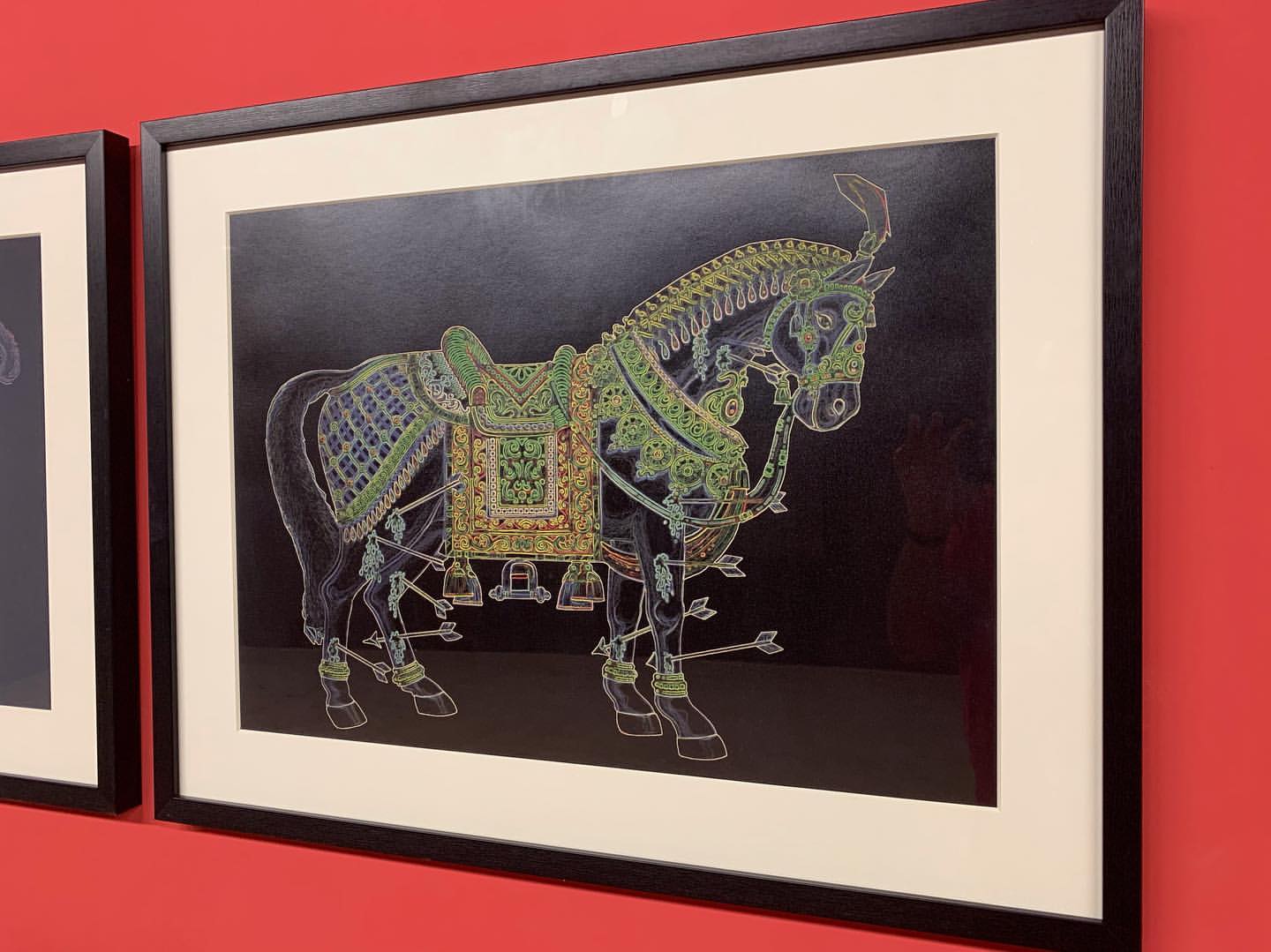 PHOTO: EXPRESS
PHOTO: EXPRESSAll this is dimly visible within a multicolored texture and a network of minutely written holy words, such as Allah,” says noted art writer S. Amjad Ali about Irani’s similar work, Naqesh-e-Haq-o-Batil.
Irani, who regularly flit from one form to another, was able to utilise the traditional Naqsh format to not only represent the everlasting images from Karbala but to also reinforce their link with the divine.
As artist Meher Afroz recounts, Sadequain would also rely upon the written word, and use his distinctive calligraphic style, to pay homage to Imam Hussain (RA) by rendering Allama Iqbal’s poetry in praise of Prophet Muhammad’s (Peace Be Upon Him) grandson onto the canvas. Although Sadeqauin’s oeuvre has no collection dedicated to the events of Karbala, Afroz believes that “he would paint about Imam Hussain (RA) whenever he felt like it.”
However, for some artists, a large part of their body of work, whether consciously or not, has been influenced by the events of Karbala. Afroz remembers the magnificent alams which her family-owned and which enchanted her when she was younger but had to be left behind in India (Where in India) when she moved to Pakistan. “But what fascinates me about Karbala is that it transcends religion, it speaks to our shared humanity,” Afroz says, and that is precisely what she captures in her finely crafted prints which are often adorned with delicate, devotional writing.
Unlike some other artists, she chooses not to overtly draw attention towards her source of inspiration, and most observers may well miss the rich symbolism which underpins her work. Whether she is working with metal, print, or water (for the upcoming Karachi Biennale 2019), Afroz feels that her work somehow always hearkens backs to Karbala. She says, “I’m never disconnected from Karbala,” and, if Karbala inspires such art, then why would anyone want to be?
Have something to add to the story? Share it in the comments below.
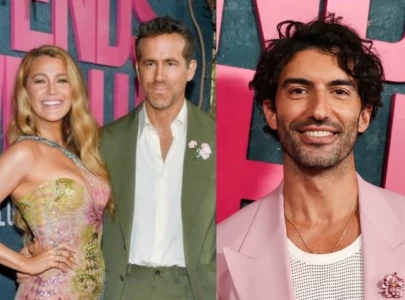


1737442119-0/BeFunky-collage-(12)1737442119-0-165x106.webp)
1737416356-0/Trump-(9)1737416356-0-165x106.webp)


1737680586-0/Hamza-(1)1737680586-0-270x192.webp)



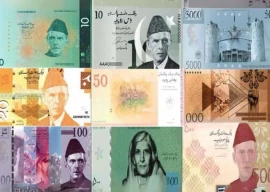


1737614355-0/Express-Tribune-(1)1737614355-0-270x192.webp)


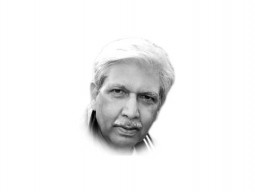





COMMENTS (2)
Comments are moderated and generally will be posted if they are on-topic and not abusive.
For more information, please see our Comments FAQ